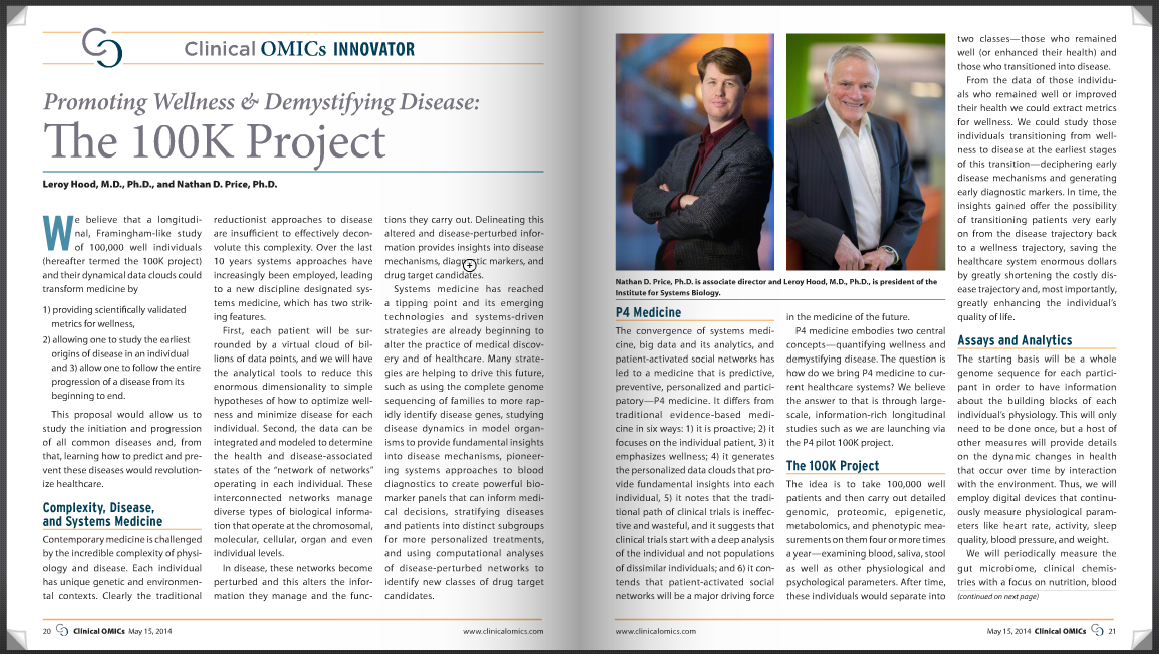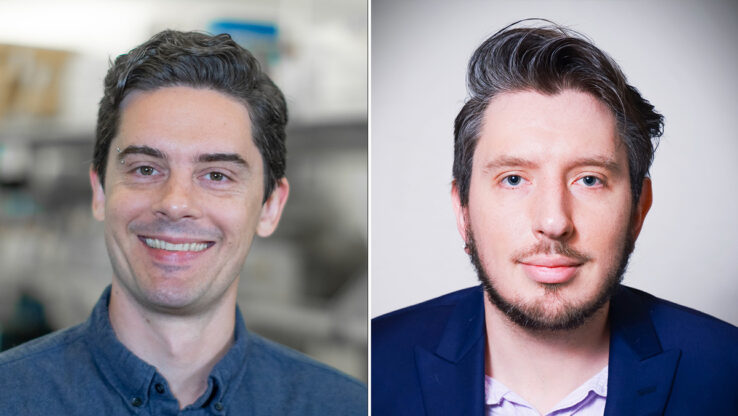100K Wellness Project Article by Lee Hood and Nathan Price in Clinical Omics
 isbscience.org/news/2014/05/15/100k-wellness-project-article-by-lee-hood-and-nathan-price-in-clinical-omics/
isbscience.org/news/2014/05/15/100k-wellness-project-article-by-lee-hood-and-nathan-price-in-clinical-omics/
The latest press about the 100K Wellness Project is in the May 15 issue of Clinical Omics and features a piece by Dr. Lee Hood, president of Institute for Systems Biology (ISB), and Dr. Nathan Price, ISB’s associate director.
Read “Promoting Wellness and Demystifying Disease: The 100K Project”

ISB’s 100K Wellness Project featured in Clinical Omics Magazine. The article was written by Dr. Lee Hood and Dr. Nathan Price from Institute for Systems Biology.






